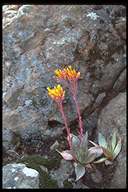
Wildflowers
With the arrival of winter rains in December and January, the rolling hills of Spenceville turn into an inviting, velvety green. Wildflowers begin to appear in the grassy oak woodlands usually in early-March, as yellow buttercups and blue-purple brodiaeas rise out of the warming soil. While wildflowers bloom with delicate beauty and sweet fragrance through May, the peak of the bloom is usually in mid-April when poppies and lupine cover the hillsides above Fairy Falls in hues of gold and purple.

Blueheaded Gilia (Gilia capitata) blooms along the trails in April with ball-shaped clusters of small, light blue flowers. In an abundant flower year it covers whole hillsides in sunny areas of Spenceville. It grows from 6 inches to 3 feet tall on upright stems. Check this lovely flower out with your hand lens!
Buttercups, Western and Prickleseed, Ranunculus occidentalis and R. muricatus. Buttercups begin blooming at Spenceville in late-February and can be found in wet areas along the road and at stream edges. The Prickelseed Buttercup, blooms in March and April and grows by the stream on the Woodland Trail. It is fun to identify with a hand lens by its tiny prickles that grow in a small circular space on the sides of each small seed. Buttercup seeds were gathered by the Nisenan and roasted by fire-heated rocks in flat, tightly woven baskets. The baskets were shaken so that the rocks did not burn either the basket or the seeds. After roasting, the seeds were safe to eat and tasted like popcorn.
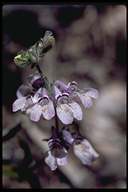
Chinese Houses (Collinsia heterophylla) bloom in profusion in April along the trail that follows the creek above Fairy Falls. Its flowers bloom lavender and white in pagoda-like whorls around the stem and are a delight to look at through a hand lens. The intricate markings on the petals are nectar guides that entice insects deep into the flower in search of nectar. In the process the flower is pollinated and seed production begins.
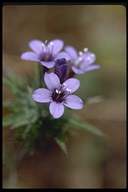
Downy Navarretia (Navarretia pubescens) A tiny flower that blooms hidden in the grasses among larger flowers is the navarretia. Its blue flowers bloom in a cluster at the top of its 4 inch stem. In a good year of adequate rainfall it can grow taller, but is usually still lost in the grasses. You'll have to hunt for this one and then use your hand lens to enjoy its delicate beauty
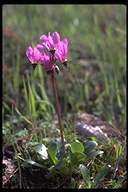
Henderson's Shooting Star (Dodecatheon hendersonii) blooms vibrant pink in early-March in wet areas. It is one of Spenceville's most exquisite flowers. Its scientific name Dodecatheon comes from the Greek word dodeka for "twelve" and theos "for Gods." It was named by Pliny, a Roman naturalist and writer, who lived from 23 to 79 A.D. He thought the cluster of flowers, each bearing a crown of reflexed petals, looked like an assembly of the twelve important gods of the Roman world. Thus he called it the flower of the twelve gods. After fertilization the flower moves to a vertical position as if to celebrate its fulfillment!
Lily species Many species of lilies can be found blooming among the grasses and were an important staple for native people throughout California. They gathered the bulbs and seeds of the various genera and species in the fall and either ate the bulbs raw on the spot or the bulbs were roasted in earthen pits and eaten later. The seeds were ground into a meal and cooked as a mush or used in unleavened flat breads. To find the various lilies, look for flowers with 3 or 6 petals. There are the blue-purple Blue Dicks (Dichelostemma capitatum) Grass Nuts (Triteleia laxa) , Multiflowered Brodiaea (Dichelostemma multiflorum)
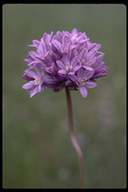
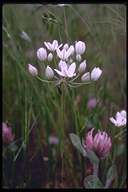
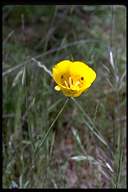
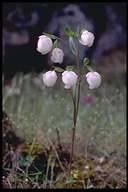
Lobb's Poppy (Eschscholzia lobii) blooms in April, along with the Tufted Poppy (E. caespitosa),
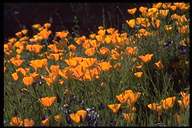

Lupine (Lupinus sp.) Various species of lupines grow in Spenceville on the grassy hillsides among the poppies and other flowers. Lupines are members of the Pea Family and after fertilization form pea pods that are eaten by animals but are toxic to human unless processed. If eaten raw, the seeds and herbage of lupines can cause convulsions and paralysis. Native Americans knew how to process them safely and brewed them into a medicinal tea. After fertilization the top petal of each little flower turns from white to a deep red-purple. Lupines developed this coloration as a response to bees that pollinate the flowers. Bees and other insects are drawn to flowers, in part, because of the contrasting colors and markings on the petals. They have learned over hundreds of thousands of years that contrasting colors are guides to the nectar inside a flower. Since bees do not see the reds they are not drawn to the low-contrast blue and red of the pollinated flowers and instead visit the blue and white flowers that have not yet been pollinated - a very clever adaptation on the flower's part!!
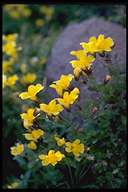
Seepspring Monkeyflower (Mimulus guttatus) blooms in wet areas along the road and beside streams in March and April. Its bright yellow flowers look like little snap dragons and often carry red spots on its lower petals to attract insects into the flower's and the fuzzy hairs on the lower petal gather pollen from visiting insects. Its name "monkeyflower" refers to its flower shape that looks, with a bit of creative license, like the face of a happy little monkey.